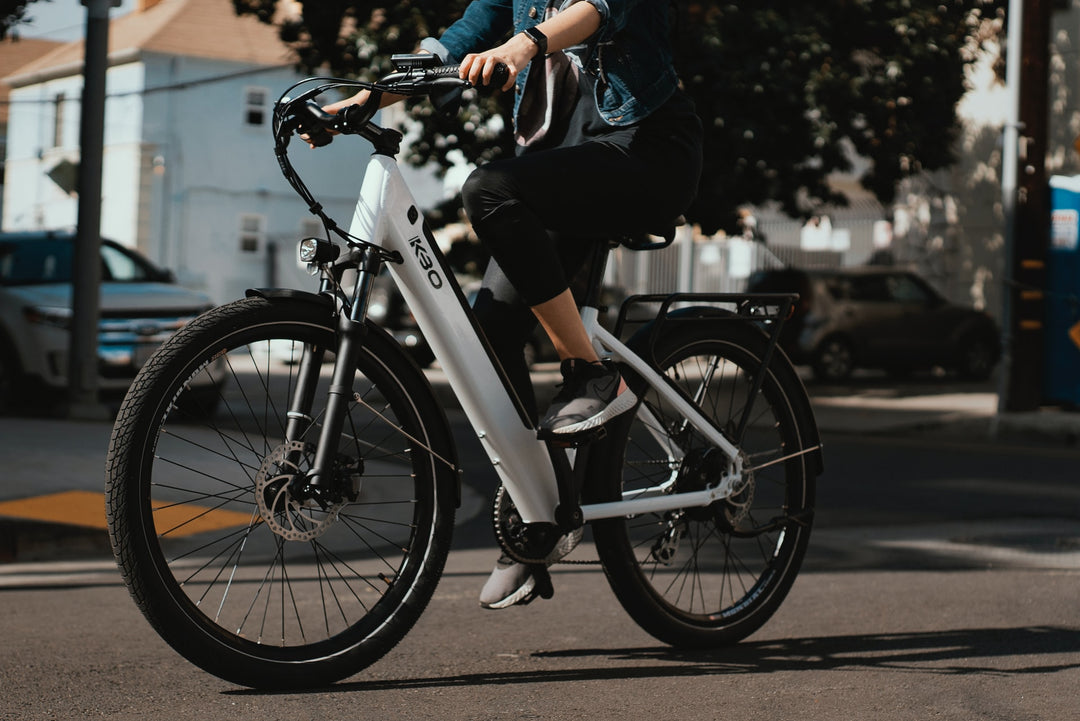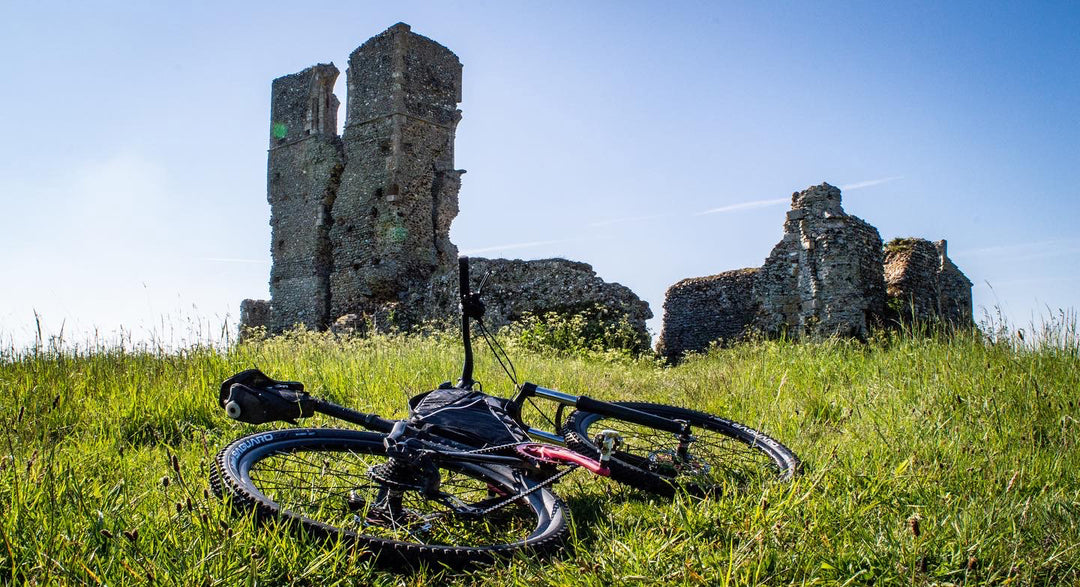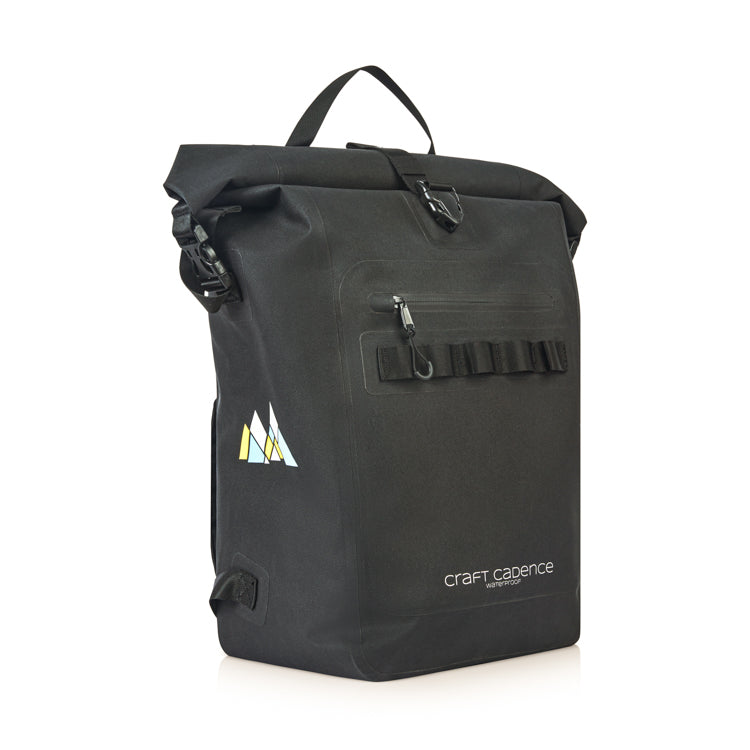The case for using a backpack for cycling commuting
Why commute by bicycle?
Commuting by bicycle is fast becoming the best way for a lot of people to get to work. Taking control of when you leave instead of chasing a bus or train. Bypassing lines of static traffic in city centers makes it the ideal mode of transport for many.
The downside to commuting by bicycle is that it can become a logistical nightmare to carry a heavy laptop, change of clothes, and larger than usual lunch box to refuel the hungry cyclist.
How can this be achieved? Where should you start?
A backpack. Naturally.
Humans have always carried weight on their backs, as early as mankind could walk upright he slung his captured dinner over his back to support the load as he traveled.

Photo by Bridget Coila / CC BY
The rucksack, satchel or backpack is for most people the easiest starting point for carrying a load when cycling.
It's what we are used to, as toddlers we carry our superman bags laden with cucumber sandwiches to and from school every day. Carrying on our back just comes natural to us.

Photo by Peretz Partensky / CC BY
But are there downsides or limitations to this when cycling? How much can you safely carry? Are there specific features a cyclist needs? How should you pack?
Benefits of using backpacks
The benefits of a backpack are simple at first sight. You probably already own something suitable enough. They are easy to pack and require no further equipment as a pannier bag might.
They are also, (depending on your riding position) extremely aerodynamic, sitting behind the body of the rider so that at low speed it is difficult to notice any hindrance. As the rider cuts through the air, the backpack follows closely behind.

Photo by jan buchholtz / CC BY
Key backpack features to consider
Although these statements are true, we need to consider a little more science to make sure that our simple backpack isn’t causing harm to the most important part of our anatomy. After all, getting to work is just the start.
What happens as your commuting becomes more serious? Your bike is changed for a road bike to aid speed and match your raising fitness levels, the distance is increased and you realize that you need to carry tools, laptop, change of clothes, waterproofs, and lunch. Soon, you may find yourself going off on weekend rides as well, and becoming a bit more - professional.

Photo by Charles Thompson / CC BY
If that is the case, the backpack needs to become a more cycle-specific piece of equipment.
There are a few small features which can make all the difference to your commuting bag of choice, These adaptations have come from millennia of rucksack use and make all the difference.
The most common symptom of excess weight is numbness in the hands. To counteract that, a chest strap is of utmost importance, this shares the load from the shoulders to the sternum and distributes the forces pressing down on the vital brachial plexus nerve more evenly across the body. The fit should be nice and snug, but not too tight.

A waist strap is another vital piece of a rucksack which should be used but is often left unclasped. This simple plastic clip can carry up to 90% of the weight of the bag, moving the load to a safer location below the thoracic spine.

Aerodynamically shaped backpacks can also make a difference in by having less drag and therefore maintain the rider's speed. Although taken to the extreme the amount of volume that can be carried becomes limited.

Photo by Charles Smith / CC BY
Importance of waterproofing
Another feature of a cycle specific backpack that can lift it above the basic one sitting in your cupboard is to make sure your cycling backpacks is waterproof. Because if you wish to be a real commuter, you will get wet, evenly and thoroughly.

Photo by Tejvan Pettinger / CC BY
There are generally two solutions to this. A rain cover over your backpack, which is water resistant up to a certain point (below left). Or a seam welded, 100% waterproof backpack of the roll top variety (below right). You see, any bag with zippers is likely to allow some water to get in.


What you choose will depend on your priorities. Is it more pockets and compartments that you need? Or is it making completely sure your belongings are waterproof, for example if you carry laptops?
Avoiding a sweaty back
A sweaty back when cycle commuting can mean that extra time is needed for showering and changing when you arrive, or that you need to carry a change of clothes. It can also be very uncomfortable during summer of course!
Many specific cycle rucksacks have addressed this need by cleverly creating an air gap between you and your load, making the whole experience much more pleasant. You can begin to see that all bags are not made equally when cycling is considered. See a sneak peak of our own air flow design here.
Importance of packing light
Packing a backpack is a seldom-known dark art, rarely considered by the casual cycle commuter, but this alone can make some great improvements in your comfort during those early pedal starts.
Hiking studies have shown that 15-20% your body weight is a safe maximum limit for daily use, this is fine when hiking but 10% should not be surpassed when cycling.
The weight of your pack should be kept as low as possible with heavier items worn lower on the back to avoid damaging the upper back by causing it to flex unnaturally.
So pack your tools right at the bottom even though it will be annoying to retrieve them when you need them.
The heavier items should also be kept as close to your body as possible, meaning a backpack with a front pocket should only be used for the desperate items like wallet or keys, the bag should not swing as Postural sway causes a lot of damage to the spine in hiking cases and is more pronounced in cyclists due to our tendency to think we are Chris Froome when we climb.
Commuting with a backpack is a great way to save money, and enter into the happy world of cycle commuting.

Photo by jan buchholtz / CC BY
Just be sure to obtain a bag which will appreciate you as much as you appreciate it.



